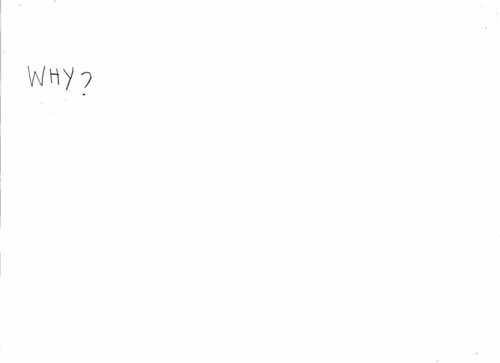Navigation
Course Reflection
My experience so far in this course has been pretty eye-opening. When I started this class I had just switched my major to English, not knowing exactly what I was I was going to do in life or how this specific major would affect my future career options. What I did know was that I enjoyed writing and having the ability to express myself. This class allowed me to chronologically experience specific forms of media through remediation, beginning from clay inscriptions to coding in HTML. Before this class I never contemplated the history of writing, let alone the definition of it. To me, writing was just something that was done and I did not think much of it. After implementing the definition of writing we came up with in class numerous times, I have found myself becoming more analytical about the "whys" of writing.

I understand that writing is a process that is comprised of certain facets that make it what it is and because of this, I now take into consideration the author's interpretation as well as my interpretation as a reader. I believe that I began to understand the major components of writing better when we completed our cheat sheet projects. Relating the terms that had previously not been a part of my vocabulary to examples and situations that were more modern proved to be easier for me to comprehend.
Sondra Perl's article, "Understanding Composing" was one of the texts that stood out to me as a whole. Not only was it easy to interpret, unlike some of the other readings, but I truly found it the most compelling. Perl's explanation of the traditional writing process, recursiveness, and the phrase "felt sense" really made me contemplate how I view myself as both a writer and a reader. She states that "recursiveness in writing implies that there is a forward-moving action that exists by virtue of a backward-moving motion." Our job is to analyze our writing processes to determine what makes writing recursive. Reading this section of the article made me realize that I am not alone in my writing style. Writers tend to write in a sequence where they often find themselves returning to specific thoughts and ideas that maintains relevancy to the topic and furthers the composing process. As a writer, I identified myself as the writer that frequently backtracks to chunks of previously written text in order to stay on topic.

I always knew that I did this but it never occurred to me that there was a definition to what I was doing. I guess I just found this article to be so standard in terms of its context – the writing process and how we evoke emotion into our writing – that I never thought to delve into the reasoning behind how we do what we do and why. It wasn't until I finished reading that I felt a little enlightened at how something so simple like a "plan-write-revise" strategy that I have known about since grade school could be so much more complex once analyzed.
One concept of Perl's article that I felt was pretty interesting had to have been felt sense and how that acts as a recursive element. Had I not read this article, I would not have considered this as such. I know that I apply felt sense when I write for purposes outside of the classroom because my writing usually has something to do with my feelings, emotions, and memories. However, I do find myself implementing this towards in-class writing as well simply because I cannot produce good writing unless I truly feel a sense of inspiration from it. I feel as though my writing is better when I can take a topic and sense specific feelings that link to that topic. To think that inspiration is recursive is again, a concept so obvious that I had not thought about it before.

My favorite experience in class had to have been the HTML coding, not solely based on the fact that I had done basic coding when I was younger, but mainly because I never thought of it as writing. However, it does in fact follow most of the elements comprised in our class's definition of writing. It is a process that features a medium; it employs symbols such as letters and numbers; and it results in a syntax that can be interpreted by someone else. In that retrospect, I would deem it as a form of writing.
Lessig's views on copyright laws and the constraints it places on our creativity highlight our generation's desire to become more of a read-write culture. The excerpts I read from Lessig and the "Everything's a Remix" video were intriguing because in my opinion, it opened up the debate on whether or not remixing can be considered writing.

After all, the basic structure of remixing in a read-write culture is that one takes an original content and creates a new work from it, regardless of whether it is amateuristic or not. I believe it was said in "RiP: A Remix Manifesto" where the narrator stated that generally authors of a work are willing to steal from their predecessors but get offensive and legal once someone attempts to steal from them.
Overall, I really found this class both enlightening and informative. Before I started this class, I knew very little about writing and all the mechanisms behind it. Not only have I adapted my previous conceptions of writing and literacy, I now know of and understand a newer form of writing. Using code to compose text, design images and video, and form combinations between these three shows just how far humans have advanced in technology and how much we as a whole have adapted and expanded on our previous conceptions of literacy.
And with that....



